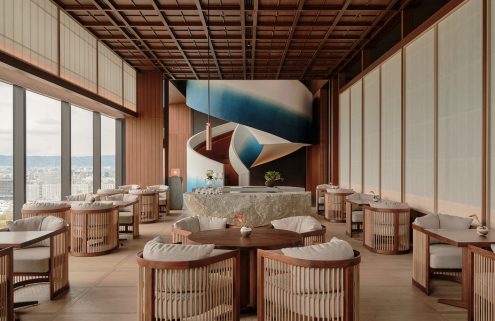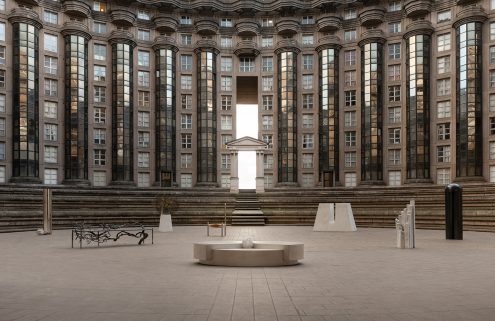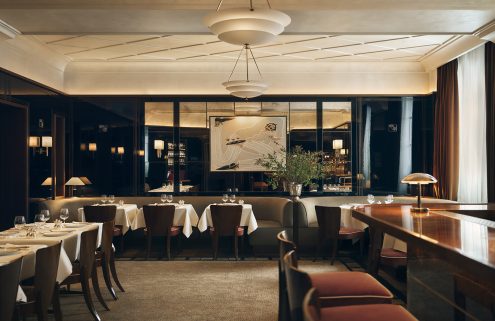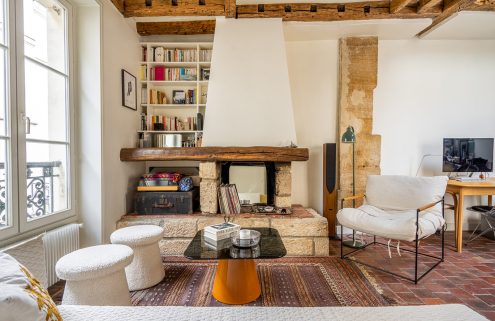The Grand Palais is abuzz with gallerists and collectors revelling in Art Basel’s first Paris foray. Yet two highlights of the inaugural Paris+ Par Art Basel fair can be found just beyond the Beaux Arts hall.
Across the Jardin des Tuileries in Place Vendôme, Berlin-based Polish artist Alicja Kwade has arranged her familiar planet-like stone orbs around the square’s towering bronze obelisk. Striated and veined, the spheres come to rest in seemingly random formation, sat on concrete plinths or entangled in illogical, Escher-style staircases.
Surrounded by the venerated architecture of Jules Hardouin-Mansart, they introduce a paradox between a place of power, firmly entrenched in a long-nurtured human civilisation, and the infinite timeline of the cosmos. Created with support from curator Jérôme Sans and kamel mennour gallery in Paris, Kwade‘s temporary space is fragile, elusive.
Time is relative. How can we be certain of where we stand in our established society when the universe remains unexplained? How are we to find our own place on this planet, floating in the void? These are questions she continually asks her viewers to contemplate, and her concrete treatments provide a stage on which to do so. They’ll be in situ through 13 November 2022.

Alicja Kwade, Au cours des mondes, 2022. Photography: © Archives Kamel Mennour.

Alicja Kwade, Au cours des mondes, 2022. Photography: © Archives Kamel Mennour.

Alicja Kwade, Au cours des mondes, 2022. Photography: © Archives Kamel Mennour.

Alicja Kwade, Au cours des mondes, 2022. Photography: © Archives Kamel Mennour.

Alicja Kwade, Au cours des mondes, 2022. Photography: © Archives Kamel Mennour.

Alicja Kwade, Au cours des mondes, 2022. Photography: © Archives Kamel Mennour.
By contrast, Ugo Rondinone’s exhibition, on show at the Petit Palais until 8 January 2023, is a journey. Inspired by an extract from a poem written by John Giorno, his late partner – The water is a poem/ unwritten by the air/ no. the earth is a poem/ unwritten by the fire – it depicts the human form in contact with the four elements.
It begins outside the building with three vividly painted bronzes, seemingly cloaked against the air like religious figures. In the rotunda, he strips his bodies bare, paints them with sky scenes and dangles them from the ceiling in elegant, almost enraptured repose. And finally, in the sculpture gallery, he has positioned a series of nude figures across the marble floor in various states of meditation. Rondinone has crafted them from soil collected across all seven continents – ‘vessels,’ he says, ‘that contain the natural world of earth’.
The artist’s latest addition is a video work called Burn To Shine, featuring dancers gyrating among all four elements at a spiritual gathering in the desert.



























